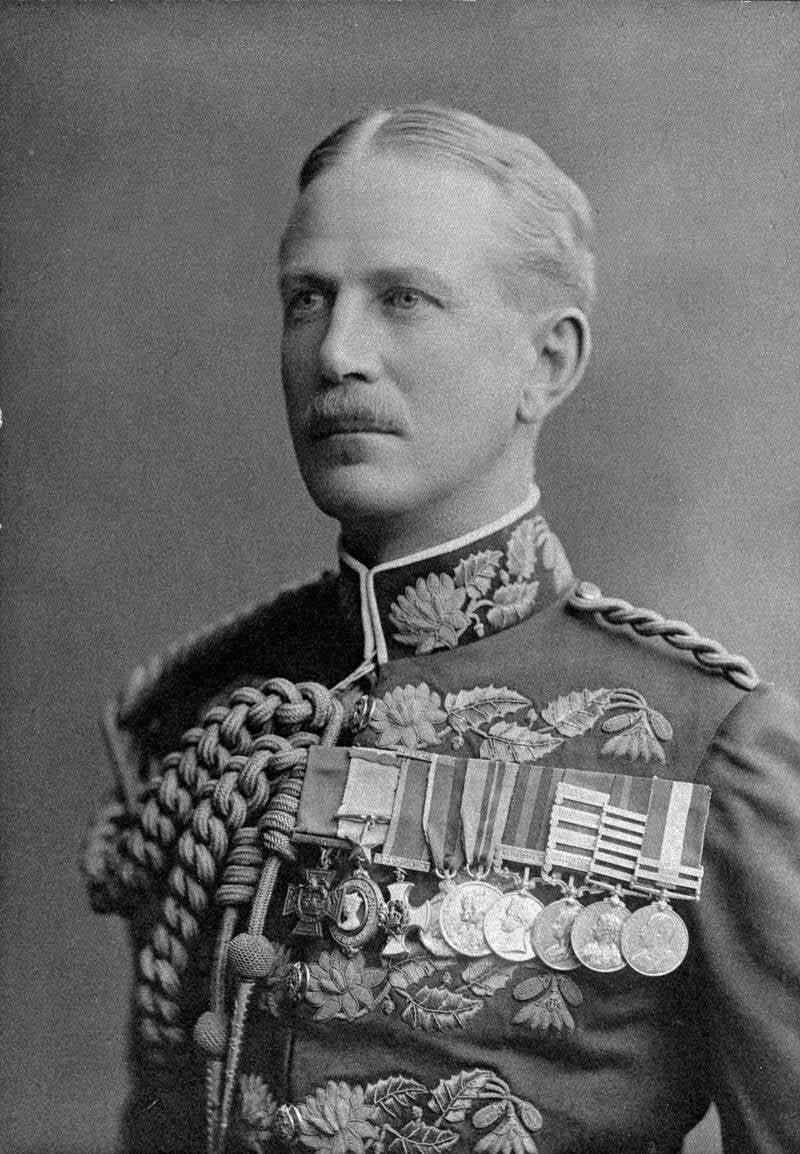Ypres Reservoir Cemetery
History Information (Source: CWGC)
From October 1914 to the autumn of 1918, Ypres (now Ieper) was at the centre of a salient held by Commonwealth (and for some months by French) forces. From April 1915, it was bombarded and destroyed more completely than any other town of its size on the Western Front, but even so certain buildings remained distinguishable. The ruins of the cathedral and the cloth hall stood together in the middle of the city, part of the infantry barracks stood in an angle of the south walls and the prison, reservoir and water tower were together at the western gate. Three cemeteries were made near the western gate: two between the prison and the reservoir, both now removed into the third, and the third on the north side of the prison. The third was called at first the "Cemetery North of the Prison," later "Ypres Reservoir North Cemetery, and now Ypres Reservoir Cemetery. This cemetery was begun in October 1915 and used by fighting units and field ambulances until after the Armistice, when it contained 1,099 graves. The cemetery was later enlarged when graves were brought in from the battlefields of the salient and smaller burial grounds.
There are now 2,613 Commonwealth servicemen of the First World War buried or commemorated in the cemetery. 1,034 of the burials are unidentified. The cemetery was designed by Sir Reginald Blomfield.
Served with
· United Kingdom (1330)
· Australian (121)
· Canadian (106)
· New Zealand (18)
· South African (7)
· Indian (1)
Served in
· Army (1571)
· Air Force (8)
· Navy (4)
VICTORIA CROSS
Brigadier General Francis Aylmer MAXWELL - Cdg. 27th Inf. Bde, 9th (Scottish) Div. General Staff late 18th King George's Own Lancers
Died 21 September 1917 Age 46
Country of Service: United Kingdom
Awards: Victoria Cross, Companion of the Star of India, Distinguished Service Order and Bar, Three times Mentioned in Despatches
Citation
An extract taken from the "London Gazette," dated 8th March, 1901, records the following:- "Lieutenant Maxwell was one of three Officers not belonging to "Q" Battery, Royal Horse Artillery, specially mentioned by Lord Roberts as having shown the greatest gallantry, and disregard of danger, in carrying out the self-imposed duty of saving the guns of that Battery during the affair at Korn Spruit on 31st March 1900. This Officer went out on five different occasions and assisted to bring in two guns and three limbers, one of which he, Captian Humphreys, and some Gunners, dragged in by hand. He also went out with Captain Humphreys and Lieutenant Stirling to try to get the last gun in, and remained there till the attempt was abandoned. During a previous Campaign (the Chitral Expedition of 1895) Lieutenant Maxwell displayed gallantry in the removal of the body of Lieutenant-Colonel F D Battye, Corps of Guides, under fire, for which, though recommended, he received no reward."
Grave Reference: I. A. 37.
(Source: Wikipedia)
Distinguished soldiers
Francis Aylmer Maxwell, Brigadier General of the 18th King George's Own Lancers, Indian Cavalry, is a holder of the Victoria Cross (VC), Distinguished Service Order (DSO) and the Order of the Star of India (CSI).
Arthur Cecil Lowe, Brigadier General in the Royal Field Artillery was awarded the Order of St Michael and St George (CMG) and the Distinguished Service Order (DSO).
the lieutenant colonels Athelstan Moore, Edward Robert Burne, N.M.C.D. Teacher and Audley Charles Pratt; Majors James Leadbitter Knott and William Affleck Adams were awarded the Distinguished Service Order (DSO).
St. Barbe Russell Slade, Lieutenant Colonel in The Queen's (Royal West Surrey Regiment) was awarded the Territorial Decoration (TD).
John Maxwell, Lieutenant Colonel in the Rifle Brigade and F. Davenport, Major in the Royal Field Artillery were awarded the Distinguished Service Order and the Military Cross (DSO, MC)
Charles Augustus King, Lieutenant Colonel, Canterbury Regiment, N.Z.E.F was twice awarded the Distinguished Service Order (DSO and Bar). He also bears the Croix de guerre (France).
Eric Waterlow, Captain in the Royal Air Force was awarded the Military Cross and the Distinguished Flying Cross (MC, DFC).
Captain Herbert Mather Spoor; the lieutenants R.R. Brunton, William Mandeville Sankey, and Francis John Tuckett; sub-lieuts Osmer Noel Stewart and G.O. Edwards were awarded the Military Cross (MC). Lieutenant William Matthew Conroy also received the Military Medal (MC, MM).
Canadian Infantry Lieutenant Edwin Alfred Trendell was twice awarded the Military Cross and also received the Military Medal (MC and Bar, MM).
Second Lieutenant Henry William Nicholson, Sergeants Edward Robert Furniss and Joseph Ernest Jackson, and Privates D.I. Griffiths, James Daniel Wilks, T. Hewitt, and T.C. Arthur were awarded the Distinguished Conduct Medal (DCM).
there are still 26 servicemen who received the Military Medal (MM).
Marsden Atkinson, Sergeant in the Army Service Corps, was awarded the Meritorious Service Medal (MSM).
Executed soldiers
Thomas Moles, soldier with the 54th Bn. Canadian Expeditionary Force was shot for desertion on October 22, 1917. He was 28 years old.
Ernest Lawrence, soldier with the 2nd Bn. Devonshire Regiment was shot for desertion on November 22, 1917. He was 21 years old.
Charles McColl, soldier with the 1st/4th Bn. East Yorkshire Regiment was shot for desertion on 28 December 1917. He was 26 years old.




















































































